If you are interested in spearfishing, it is quite natural that you will need a scuba gun. You will also need a way to travel underwater, like flippers, you will need a scuba for breathing, you will need a diving computer for safety, but among other things, you will need a wetsuit.
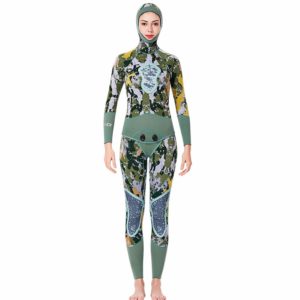
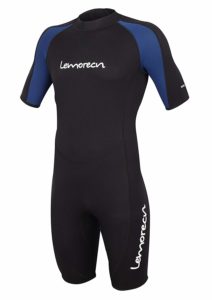
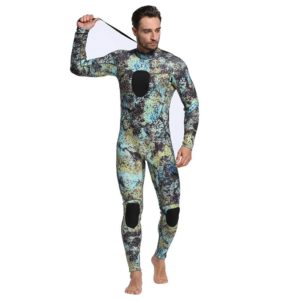
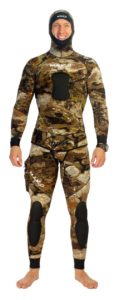
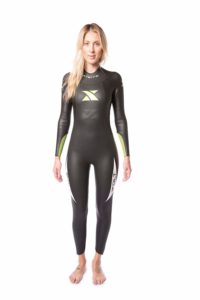
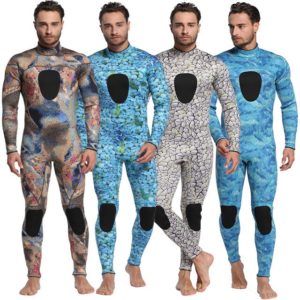 Some people tend to believe that a website is not a required gear for fishing. They readily agree that a scuba is a must (although it can be replaced with a snorkel), and they also admit they need a speargun, obviously. But a wetsuit is just as much of a necessity as the other things.
Some people tend to believe that a website is not a required gear for fishing. They readily agree that a scuba is a must (although it can be replaced with a snorkel), and they also admit they need a speargun, obviously. But a wetsuit is just as much of a necessity as the other things.
You need a wetsuit to offer your protection from the environment and keep you warm and safe from any underwater debris. It’s not just your underwater winter coat, it’s also your underwater armor.
How well you choose your wetsuit will affect your performance and results. If your wetsuit is warm, if you can spend hours underwater, then you can achieve a lot. But to get the best of the best wetsuits, all you need is to read this review and, especially, the Buyer’s Guide, so you can finally get that big fish.
Top 5 Best Diving Suits — Wetsuits for Spearfishing in 2019
1ZUKN Women's Wetsuit — Best Women’s Spearfishing Wetsuit
Unfortunately, there are not many unisex wetsuits that are also great for spearfishing. Fortunately, here we have a dedicated women’s wetsuit made for spearfishing. You get all the features any good spearfishing wetsuit should have, including the camo coloring, and it’s cut for ladies.
It’s a typical two-piece hooded wetsuit, and that means it can keep you warm without restricting your movements.
Do note, it’s only 3mm thick, so I wouldn’t advise spearfishing in the water that is really freezing cold for a long time, a 7mm suit would feel a lot more comfortable. That said, the wetsuit is double-layered: you get a neoprene jacket to wear with the rest of the wetsuit. That’s enough to prevent hypothermia but not to feel comfortable if it’s freezing cold. But even then, it’s good at keeping the user warm, as long as the water is just cold. Besides, the less thick it is, the easier it is to move.
Forget about UV radiation and jellyfish bites. Aside from good insulation, it also provides excellent protection.
- Double layered. You get a neoprene vest to insulate your torso even better
- Hooded. A must-have for a really great spearfishing wetsuit
- Camouflage. Spearfishing is like hunting. If you can blend in, you can get that fish
- Ladies’ best spearfishing wetsuit. Enough said
- Not suitable for freezing water. It offers great insulation, but it's only 3mm thick.
2Lemorecn Wetsuits — Best Short Monosuit
If the water is not too cold, and you don’t want to stay there for too long anyway, and you’d like to save some money, then you can choose this Lemorecn wetsuit. I have to warn you, it is not made for spearfishing, but even so, it’s an excellent wetsuit anyway.
It’s three millimeters thick, and it only goes down to the knees and elbows. That’s not enough to protect you from the icy water, but for an hour or two of spearfishing in relatively comfortable conditions, it should suffice.
It will you warm, even though it doesn’t cover the body thoroughly.
- Insulation. For all of its falls, it’s a warm wetsuit, and it will keep you warm where it covers your skin.
- Non-restricting. Since it doesn’t even cover your knees and elbows, there’s no way it can restrict your movements.
- Cheap. Because the manufacturer used less neoprene, the wetsuit is less expensive.
- Does not cover the body fully
- Not a dedicated spearfishing wetsuit
3Dyung Tec Wetsuit — Best Bang for the Buck
Saving money is something we all are concerned about. This Dyung Tec wetsuit can help you with that.
Again, it’s a 3mm wetsuit, and it’s great for most diving conditions. It’s camouflaged, so you don’t have to worry about being spotted by your prey. Unless you want a recognizable brand label stamped on your wetsuit, the Dyung Tec wetsuit is probably the best wetsuit that you can get. It’s not a well-known brand, but then again, that’s why they sell their suits so cheap.
The only thing that I have to say against this wetsuit is that no hood is included. When it comes to spearfishing, the hood is vital to have, and so I would advise you to get something else, provided you can afford that. Otherwise, this wetsuit is more than enough for most spearfishing enthusiasts’ needs.
- Unisex. Although the sizing chart is lacking, it’s a unisex spearfishing wetsuit
- Dedicated spearfishing wetsuit. We all love catching fish, and that is why we need the best tools and gear to do that.
- Camouflage. Essential for getting close to fish
- No hood. For a dedicated spearfishing wetsuit, the absence of a hood is regrettable.
4MAKO Spearguns’ Spearfishing Wetsuit — Best Spearfishing Suit Overall
3D Yamamoto Reef Camo 7mm 2 Piece
If you don’t want any discount wetsuit, I can’t say I blame you for that. If you want the best wetsuit of the best, and you don’t mind paying for the quality, here it is. The best wetsuit for spearfishing.
When it comes to insulation, very few wetsuits can be compared to this one. Why? For starters, it’s the thickness. 7mm Yamamoto neoprene makes it suitable for even freezing cold water. But then you find out you get a two-piece design and a waterproof hood, and the wetsuit starts looking even better than at first glance.
Let’s not forget about the camo coloring, the knee pads, and the chest pad.
- Camouflage. When you need to stay hidden, you need camouflage
- Hood. A hood insulated your head, that is very important for spearfishing in cold water
- Dedicated spearfishing wetsuit. If you want to catch fish underwater, that’s what you need
- 7mm neoprene. If you're going to stay warm, the thicker, the better
- Price. For all the benefits, they don’t come in cheap
5Xterra Wetsuit — Best of Cheapest Women’s Wetsuits
If you need a diving suit and you don’t want to pay extra for it, why not pick this suit? It’s not the best wetsuit for women, but it’s definitely the cheapest of the best.
Actually, the only thing I can say against this wetsuit is that it’s not made for spearfishing. It lacks camouflage, and it doesn’t cover your head, which actually a sort of a requirement when it comes to spearfishing. The insulation isn’t terrible, because 3mm neoprene is enough for just about anything except unusually cold water.
But it’s a great wetsuit if you don’t want to hunt for fishing for hours. Of course, it’s better suited for diving and swimming, you need something less eye-catching for spearfishing, but if we’re talking about everything else, other than the color and the hood, it’s a pretty decent product.
- Lightweight. The weight of a wetsuit isn’t critical, but it’s still something to consider
- Hydrodynamic. You need that for less water resistance
- Ladies' wetsuit. An excellent fit for many ladies
- Not a dedicated wetsuit. It’s a good wetsuit, but it’s not made for spearfishing
- No hood. It’s a great wetsuit, but it doesn’t cover your head.
Buyer’s Guide
Spearfishing wetsuits are tailored to the needs of spearfishers, which are very different from those of a diver. Of course, a spearfisher is also a diver. However, there are subtle distinctions.
A typical diver has very little need to move about and spends very little time underwater compared to a spearfisher. Recreational diver spends up to an hour in the water at most. A spearfisher is going to spend at least several hours in the water, and he’s going to be moving a lot during those few hours.
That means a few things. One, a spearfisher is going to be burning his oxygen like no one’s business. Getting back to the surface is crucial in a situation like that. Second, to move quickly, a diver must have freedom of movement, and for that, he needs a very flexible wetsuit, a wetsuit that does not restrict movement. It also must be as soft as possible, and as light as possible.
A spearfishing wetsuit must have as few openings as possible, no matter how good they are fastened. Wetsuit for spearfishing must be well insulated, and you can’t afford to be using a thin wetsuit. Getting hypothermia is all too simple when you spend hours underwater, and your wetsuit is your first line of defense.
The best spearfishing wetsuits had to be made in one piece. But these days, you can get decent waterproofing if you use a two-piece wetsuit. However, I must admit that a one-piece wetsuit simply does not have such liability as an opening. A typical diver can afford using a two-piece wetsuit, but a spearfisher has to be very careful.
Wetsuit Types
There are three types of wetsuits used both by regular drivers and spearfishers. Each is designed for different conditions, including temperature. A type of wetsuit is the first thing to pick when making a choice in favor of a product. You need to understand clearly where and how the suit will be worn. So, what are these types?
Dry Wetsuits
You can tell that dry wetsuits are airtight from their name alone. Indeed, they isolate the user’s body from the water. That makes them ideal for diving in freezing water as well, but you won’t be needing to do that most of the time.
The cuffs are sealing, and the zippers are also waterproof. Therefore this kind of wetsuit is the best as long as you don’t want the water to touch your body at all. Dry wetsuits have all the waterproofing they need, and that’s the reason why dry wetsuits are the best to use for an extended period.
A long time ago, dry wetsuits had to be one piece to allow sufficient waterproofing. The upper and lower parts were connected to each other, and the joints were sealed in different ways: using waterproof glue, welded seams, and more. Now, a two-piece wetsuit can offer adequate water protection, and it’s likely to come with a fitting for scuba and air valve. The diver controls the amount of air inside with the valve to change the depth.
Many modern dry suits for spearfishing are made from neoprene or three-layer trilaminate, and both materials have their pros and cons.
Neoprene suits for spearfishing are more elastic than suits made from other materials, warmer, fit the body perfectly, and they don’t fold, very rarely so. But it takes them too long to get dry.
Trilaminate has its own drawbacks. For example, it’s not really stretchable. It’s a bit heavy, and it also constraints movements too much. Bending down to slip the flippers on is a challenge if you wear a wetsuit made from trilaminate. The seams are more challenging to work on, as well, and because of that, trilaminate wetsuits are more likely to come undone than neoprene. All in all, dry wetsuits are quite thick regardless of the material, often more than 7mm.
As I said, dry wetsuits should be reserved for freezing water only. There are several reasons for that. The excessive bulkiness is one of them, the high price is another. Plus, you’d have to buy special underwear as well, since no one uses dry wetsuits without specially made undies, or so I’ve been informed.
Semi-dry
No a fully impenetrable type of wetsuit, but it’s good enough. It’s decently waterproof. However, water can still get under this kind of suit, albeit in small amounts. The amount of water that does get under the suit can be neglected because it fits snugly to the body. While the insulation a semi-dry wetsuit offers is not good enough for swimming in near-freezing water, it’s decent for most temperatures. A semi-dry wetsuit can still provide some pretty good insulation. It’s not like this type of suit does not come with its own obturators and sealed zippers. All of that is more than enough for preserving heat.
Semi-dry wetsuits are most often made from a layer of neoprene that is 5-7 mm thick, less often from other types of microporous rubber. Neoprene shrinks at great depths under the water pressure, which negatively affects its thermal insulation properties and buoyancy. Besides, this material cannot be called wear-resistant, mainly if used intensively, it only serves for a relatively short time before it deteriorates.
That happens because foamed neoprene is as susceptible to fatigue as any metal, and it’s often compressed and released when in use. That makes the maximal life cycle of a neoprene wetsuit not exceed 5 years.
Almost all semi-dry costumes are made of double-sided neoprene and equipped with rigid zippers. They may sound good, but that design impedes the movement of a spearfisher. They have to exert a lot of physical effort. In the process of spearfishing, as a result, that fatigue accumulates faster, and the user also gets tired.
Wet
A wet wetsuit is one of the most popular options to date. There’s a reason it’s called a “wetsuit” and not something else. I’m going to call them just wetsuits in this paragraph, to avoid repeating the phrase “wet wetsuits,” which feels incredibly redundant, bordering on violating.
Wetsuits are not really waterproof. In fact, they are pretty much water-transparent. The catch? They absorb water and then keep it. The water under the wetsuit is heated from the body heat, and since it does not mix with the cold water outside the wetsuit, there’s no heat exchange, which makes it more or less insulating. Of course, it is difficult to call that design an effective heat insulator, so a wetsuit should be run pretty tight. I don’t say a size smaller, but as close to “smaller” as you can get without actually going there. The more snugly it fits, the less water can get inside, the less heat your body is going to emit to heat it.
It doesn’t actually mean that normal wetsuits are only good throughout the warm season. You can still use in near-freezing water, depending on the thickness. How about just above 32 degrees? You can do that if it’s thick enough.
Just as semi-dries, actual wetsuits are made from neoprene, and its thickness varies between 1.5 and 9 mm. The thicker the suit, the warmer it is. However, the thickness also impacts the elasticity and your mobility. As you can guess, while a regular diver couldn’t care less, a spearfisher is going to need all the mobility he or she can afford.
Some of the wet diving suits are trimmed with nylon, with heat-reflecting inserts that help to retain heat. That makes wetsuits more comfortable for cold seasons.
If you want to get this type of suit, you need to consider the temperature of the water that you plan to use it in. If it’s going to be cold, then it is better to give preference to a wetsuit made with a thicker layer of neoprene.
Cut
Like actual clothing, the distinctions of wetsuits lie not just in the material used, but also in their cut. There are several varieties:
- A mono suit. It makes comfortable and reliable overalls, covering the body, arms, and legs, and if it features a built-in helmet, then also the head. Perfect for spearfishing.
- A short monosuit. It’s a discount version of a monosuit. The difference is it features short sleeves and trouser legs, and there’s no helmet. They are suitable for diving in the warm season.
- A dedicated spearfishing suit. It’s a two-piece wetsuit that resembles a monosuit. It always features a helmet and a detachable inguinal jumper.
There are also other types that don’t quite fit into either type. They may utilize some of the features of the other wetsuits, but not all of them. They are designed for different conditions: diving depths, temperatures, and so on. For instance, it’s not impossible to find a monosuit with short sleeves and without a helmet.
Suits for Spearfishing
Wet diving suits made of neoprene are the most popular among underwater hunters. Many of them feature so-called open pores, tiny bubble-suckers on the inside.
When a user puts such a wetsuit on, it literally sticks to the body. That is why underwater hunters wouldn’t be wrong to call it a second skin.
Some would expect a material like that to be all spongy and not impervious to water, but the difference between open pores and sponges is that the bubbles are all isolated. They do not “touch” each other so that the wetsuit does not actually “absorb” water. The air trapped in those bubbles serves as a heat insulator, but it has a positive buoyancy at the same time, sometimes to the point it to be adjusted with weights.
A spearfishing kit sometimes comes with a dedicated wetsuit that is moderately acceptable. As a rule, it’s going to be two-piece, soft in the upper part. It’s also going to feature a waterproofed zipper. That zipper is the weakest part of the suit, which is why it is crucial to choose the best wetsuit for spearfishing only. The other is the thickness, although it all depends on the temperatures you’re going to be fishing at.
A poor choice of a wetsuit means the user will risk freezing or, on the contrary, overheating. It doesn’t mean you can err on the safe side, there’s no safe side in this matter. Overheating is no less dangerous for your life and health than hypothermia.
To make sure you’re comfortable, and, most importantly, safe, you can check out the following chart.
Water temperature (°F) | Neoprene thickness (mm) |
41-54 | 9 |
55-64 | 7 |
65-72 | 5 |
73 and above | 3 |
These numbers are relative since all people have different levels of cold sensitivity. Some guy maybe comfortable and warm at 70°F in a thin 3 mm wetsuit, but his partner will not last 10 minutes under the same conditions and will freeze at once.
Questions and Answers
To start, you should at least store it the same way as you would any wetsuit. Spearfishing wetsuits are quite expensive, and standard wetsuits are not really cheap either. Storing the suit is the easy part, but you have to use it properly and maintain it well.
That said, the way you should maintain your wetsuit depends on what type you happen to have, For example, preparing a dry wetsuit for a dive involves using some talcum powder. If you sprinkle it on the internal surfaces, the slip will improve. You will have greater mobility, and it’s going to be easier to put it on. And if you rub the zipper any sort of wax, it’s going to improve the waterproofing.
Before putting on a wet wetsuit, you need to pour some water or apply shampoo on the inner surface. You should not wash it in a washing machine, even on the most gentle setting, and use any oil-based detergents. Otherwise, the seams may part.
After use, the outer surface of the wetsuit of any type should always be rinsed with fresh water, and the inner structures should be wiped with microfiber to remove the condensate. After that, let the wetsuit dry, but don’t put it out in the sun and don’t use heaters. It’s a bad idea to introduce heating when drying a wetsuit.
You should not fold a wetsuit for storage. You’re going to end up with lots of wrinkles on your wetsuit if you do. Store it suspended on the hangers instead.
In addition to that, a spearfishing wetsuit must be regularly and thoroughly checked for cuts, tears, and other damage, to fix them before you’re in the water. First, the damaged area must be degreased and then glued with a dedicated glue. If necessary, you can cut a patch from the old suit, but in most cases, the repair kit should suffice.
